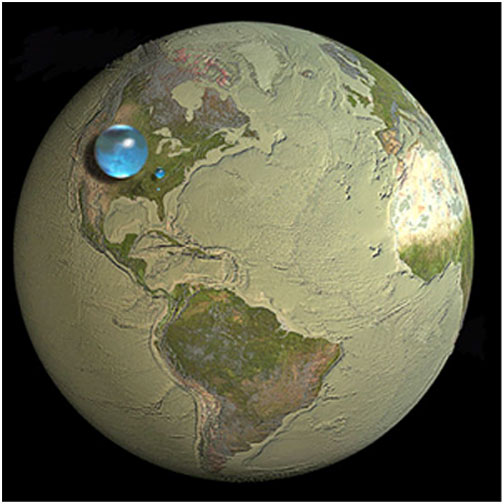Speaking of colloquy being better than soliloquy, last night I heard from my brother. That’s actually the shortened, familiar form of his full name, which is “my Younger, Smarter, Richer, Better-looking Brother.” [Not that these attributes represent significant accomplishments…the bar is pretty low.] When he was working he was doing operations research and later managing big R&D groups at Bell Labs, back in their heyday. Take a look at your smartphone. Contemplate the vast connectivity it provides, and its transparency and ease of use. Consider that apart from the system demands occasioned by a localized disaster of some stripe, the network rarely saturates. It serves us well. Going back before the AT&T breakup that spawned a proliferation of telecommunications service providers, my brother and his Bell Labs colleagues did a lot of the research and engineering needed to make all that possible, and more.
For a fascinating take on Bell Labs’ history, you might see The Idea Factory: Bell Labs and the Great Age of American Innovation (2012), by Jon Gertner. Back then, Bell Labs, which brought us the transistor, without which there would be no IT, conducted some 50% of the private-sector basic research in this country. To put this contribution into perspective, it could be argued that the societal benefits from that single invention has more than paid for all the R&D that ever has been done or ever will be done. And that’s before we get to the R&D that gave us antibiotics and so many other health benefits. Arguably, increased R&D investment… more or less across the board… is the single most important policy tool available to this country. Here in the United States, we number 300 million…a mere 4% of the world’s population. Do we want to remain the world’s indispensable nation for the 21st century? For that matter, do we want to solve our fiscal problems…the need for stimulus in the short term and responsibility over the long term… tackling entitlements as well as tax restructuring? Do we want our children to enjoy a greater prosperity than their grandparents? Do we want a more peaceful world? Do we want to preserve our environment and ecosystems? The answer to each of these questions is to increase investment in R&D…and at the same time improve the quality of STEM education that will be needed if future generations are to sustain those investments.
But we digress. Back to my brother. He’s been retired since he turned 53…almost fifteen years ago. Since then, between rounds of golf, he’s paid some attention to the investments which support his lifestyle. He came across a piece on water resources, thought of me, and sent along a link to a commentary by Alex Daley from Casey Research (Personal Freedom through Financial Freedom) based on some work he did with Doug Hornig: The Coming Water Wars. The title might not have been my choice. Aside from one reference made in passing, there’s no real case made in the article for such wars in the future. In fact, there’s a lot of scholarship out there, from organizations such as Oregon State University’s Program in Water Management Conflict and Transformation that reaches different conclusions. But the Casey Research article is a nice, high-level summary of water-resource issues as seen from a perspective interested in investment opportunities. The article contains some nice graphics. My favorite is a graphic based on USGS and WHOI work and reproduced here. It shows the volume of the world’s surface water collected up from the oceans into the largest blue sphere, perhaps 860 miles in diameter; the world’s fresh water (mostly groundwater) collected up into the smaller sphere, perhaps 160 miles in diameter, centered over Kentucky; and the world’s fresh, drinkable surface water, represented as the 35-mile-diameter blob centered over Georgia.

Credit: Howard Perlman, USGS; globe illustration by Jack Cook, Woods Hole
Oceanographic Institution (©); Adam Nieman.
Viewed this way, the Earth looks pretty dry. But at the moment, perhaps (just) wet enough. That 35-mile diameter blob translates into something like a cube of fresh water 70-80 feet on a side for each of the 7 billion of us. If we were to use that simply for drinking, and it weren’t replenished by natural processes, the supply would last us each about 600 years. Of course we’re using much more than we consume directly each day; we need the water for agriculture and livestock (maybe 90% of world use), for industrial production, and to meet needs of the energy sector. And it’s not just about us. The world’s natural biomass has a claim on that water as well. Add to that the reality that the fresh surface water isn’t evenly distributed, and we begin to see how we’re at the cusp of a problem.
Graphics such as this one and the story they tell led me to entitle this blog Living on the Real World. Living in reality on planet Earth is all about understanding the interplay between areas (the surface of the Earth, where we’re confined), volumes (of the Earth itself and resources such as water that we need), numbers of people, their resource use per capita… and their social nature.
And thinking back to that R&D investment…we have a ways to go to reach the levels of understanding of the links between resources, environment, and hazard… and society… that we need.

And don’t forget the entanglement of water and energy – can’t have one without the other!
Being an Upper Midwesterner, I try to keep tabs on the state of the Great Lakes. Last summer’s drought took a heavy tool on this precious fresh water resource, but the alarming rate of evaporation is extremely worrisome. Given the climate trends where I live on the East Coast, we have always looked forward to moving back to higher ground and lots of fresh water. It’s looking like the Great Lakes of my youth are shrinking before our eyes unless we act to reverse this ominous trend.